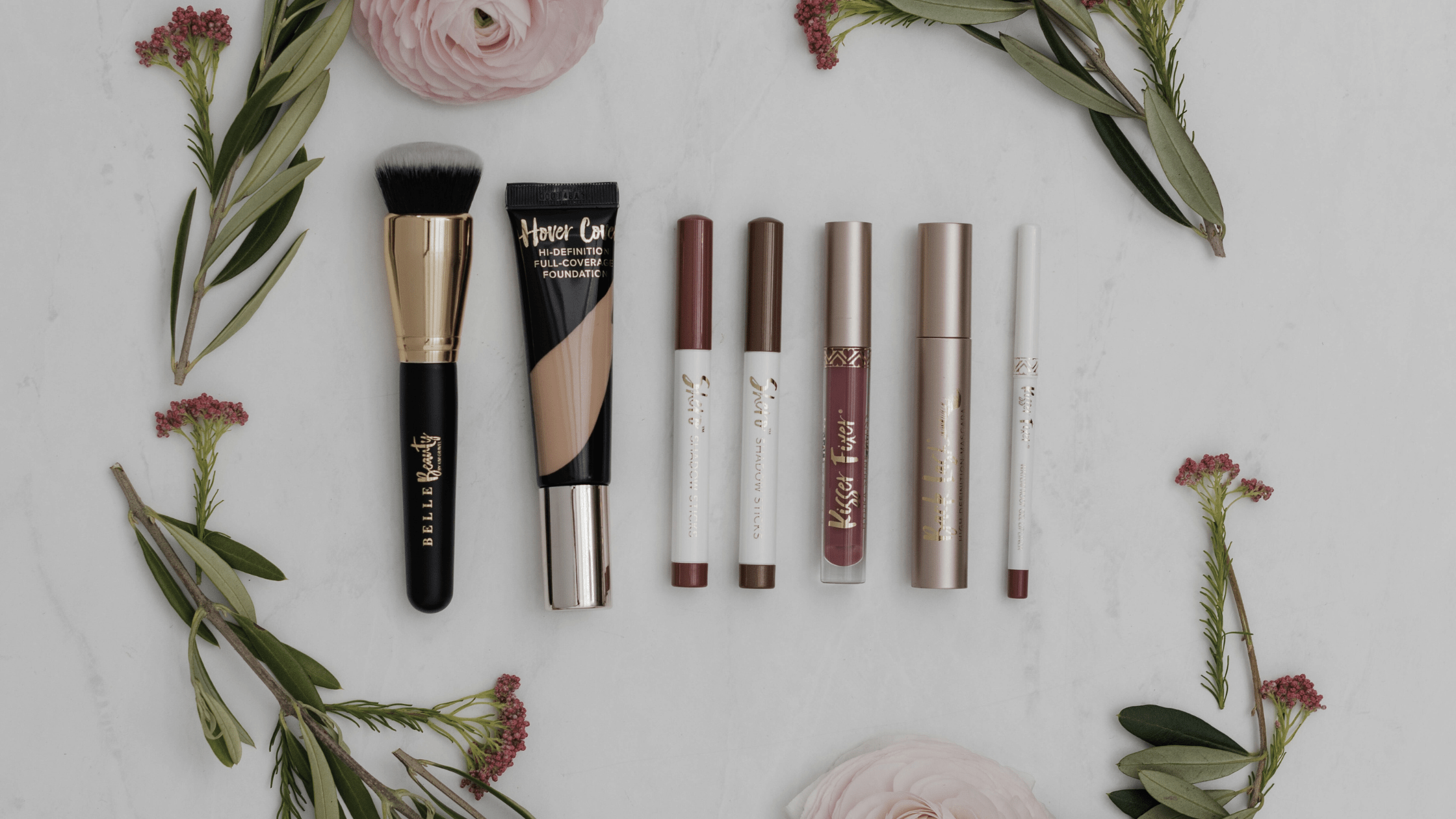Whether you are a brand owner, the export manager of a multinational company, a european importer or a distributor in the cosmetic industry, having basic regulatory knowledge on how to sell cosmetics in Europe will help you in your project launch or in your day-to-day work.
This article will help you understand the ins and outs of the European Regulation on cosmetic products and what you need to do to import, export and sell cosmetics in Europe.
1. Why registering your cosmetic products in Europe?
The answer is simple: Whether you sell them via a brick-and-mortar distributor or directly to your end consumer via an online platform, your products will need to be registered before touching the European soil. So to sell cosmetics in Europe it is obligatory to register.
2. How to choose your manufacturer well?
A – Make sure they are GMP compliant with ISO22716
If you are not manufacturing your products yourself, you must be delegating this part to a contract manufacturer taking care of it for you. Since the rules are different in different markets of the world and that European is the strictest of all, chances are that if you do not choose your manufacturer carefully, it could prevent you from ever accessing the EU market one day. In China in particular, rules are very different and manufacturer are used to complying with Chinese law and are not used to handling the documents that are needed to enter the EU market.
For example, in Europe, the manufacturer must comply with GMP ISO22716 and be able to either provide a GMP certificate or a GMP statement. Without this precious document, your product will not be able to complete the registration process.
B – Make sure that they will be able to provide you with a series of technical documents
In order to prepare the CPSR and the PIF of a product, a Safety Assessor needs to receive and analyse many technical documents related to the raw materials and finished products. You will need to ask them all to your manufacturer who is probably going to take time to come back to you with everything, the list being quite long. Before engaging with a manufacturer, you absolutely need to make sure that they will be cooperative on this part and that they will not provide you only with the MSDS of the finished product. This is going to be far from sufficient.
Here are a few documents types that will be needed and that you could ask your manufacturer to share with you:
- MSDS of each raw material + finished product
- Certificate of Analysis of each raw material + finished product
- The non-animal testing statement of each raw material + finished product
- The method of manufacture
- The formula showing the exact concentration of each raw material
- Stability/compatibility test
- Challenge (PET) test
- GMP certificate or statement
- Data on heavy metals, CMR, nanomaterials, etc.
- Data on the packaging materials
- Undesirable Effect Statement
- Artworks
C – The confidentiality problem
Many manufacturers want to keep their formulas secret. After all, it’s their core business and the last thing they want is that you go and see other manufacturers with their formulas to see if there would be a cheaper way to make your products. If you do not purchase the rights on the formulas, it’s highly probable that the manufacturer will not be comfortable sharing the above documents and information with you. In this case, your regulatory consultant will need to be in direct contact with your manufacturer in order to receive the document after having signed an NDA. This situation implies that you will not be able to receive the PIF for your product since it contains all confidential data. Therefore, by extension, that means that you will not be able to become your own Responsible Person (which is usually not a good idea anyway, but you need to keep that in mind as it will involve additional costs).
3. What to keep in mind on the regulatory side?
A – The CPSR & PIF
The holy grail when it comes to the registration of a cosmetic product in Europe is the Product Information file (abbreviated as PIF). It’s the result of the collect of all the technical documents related to the ingredients and finished product. Inside the PIF can be found the Cosmetic Product Safety Report (CPSR), which is the Safety Evaluation of the product, prepared by a Safety Assessor.
In order to be able to issue a CPSR, the Safety Assessor must have credentials that are recognized in Europe and perform a thorough toxicological analysis of the product and its ingredients. Once the Safety Evaluation is done, the Safety Assessor signs the CPSR and confirms the product is either safe or unsafe for human health. In the latter case, the product will need to be reformulated and considered safe prior to be placed on the European market.
B – Labeling requirements
When it comes to labeling, mandatory elements are pretty straightforward when it comes to the requirements set out in the EU Regulation 1223/2009. Here is the list of items that need to appear both on the inner and outer labels of your product:
- The name and address of the responsible person
- The country of origin (mandatory for cosmetic products imported into the EU)
- Nominal content at the time of packaging by weight or by volume
- Date of minimum durability
- precautions to be observed in use (warnings)
- Function/ identity of the cosmetic product, unless it is clear from its presentation/name.
- Batch number
- The list of ingredients (INCI). May be indicated on the packaging only
When it comes to your obligations in terms of Packaging & Waste, you will have to work on that with a trustworthy consultant such as ecosistant to guide you in this process!
C – Portal notification
Once the PIF and CPSR have been performed and the labels have been checked and updated, the last step standing between your product in the market is the EU portal: the CPNP.
The CPNP is the European portal where all cosmetic products need to be notified before being placed on the market. If your product contains nanomaterials, the product will need to be notified on the CPNP 6 months prior to be placed on the market.
It’s the Responsible Person who should notify a product on the CPNP under its own account. After the notification, the product will have a unique CPNP number and can be found by customs, national authorities and poison centers.
D – The Responsible Person
The Responsible Person is a person or a company that is liable for cosmetic products on the regulatory side. Their name and address should appear on the labels of the product, they should notify them on the CPNP and they must hold the PIF at the authorities disposal.
Earlier, I said that appointing your brand as the responsible person is usually not a good idea. There are several reasons to it, one of them being the fact that you need to have solid knowledge in the regulatory field in order to answer the questions of the authorities in case of inspection. Another one is that it’s always a good idea to separate the regulatory side and the sales side. Many brands appoint their distributors as their RP because they think it will make things easier if the same company handles everything.
Then, a few years later, they realized that they are unable to work with other distributors that are direct competitors of their distributor/RP and that if they want to leave their RP, they will need to take care of the whole registration process again, with a new RP. Furthermore, very often, distributors have basic knowledge in the cosmetic regulation and will not perform cosmetovigilance for you. So much money and headaches can me spared by trusting a real partner, expert in this field and without any conflict of interest.
4. What to keep in mind on the marketing side?
In the beauty world, marketing is the angular stone of the success of a brand and so it is when you sell cosmetics in Europe.
Part of the marketing takes the form of claims made on the packaging or on the website. Claims include all texts, images, or symbols used by a brand to present the characteristics of a cosmetic product. They are a real advertising and communication tool for the brand but are heavily regulated by the EU Regulation 1223/2009.
First of all, claims have to be in line with the definition of a cosmetic product in the EU, which means that words such as “heal”, “treat”, “restore”, “kill germs”, etc. are to be avoided.
In the idea of protecting the end consumer from scams, all claims shall contain information allowing the average end-user to make an informed choice and must be based on evidence. They can be sustained by consumer perception tests, experimental studies, clinical tests, bibliographic search, properties of ingredients that compose the product, in vitro test, ex vivo test, etc.
Among other strict requirements, claims shall be objective and shall not denigrate any ingredient legally used. For example, the claim “paraben-free” is forbidden in Europe since it denigrates the entire family of parabens, inside which there are legally used parabens.
The list of rules if quite long, so before starting to brainstorm on the marketing messages of your products, we would highly recommend to read more about the best practices on claims in the technical document on cosmetic claims issued by the Sub-Working Group on claims here.
5. Conclusion – How to sell cosmetics in Europe?
After reading this article about the cosmetic regulation and registration process in Europe, let’s hope you have a better understanding of each steps and the items that will need a particular care when you sell cosmetis in Europe.
You must also have understood that you cannot do it on your own and need the help of a specialist to guide you through the intricacies of the legislation.
Taobé Consulting can advise and help you on all cosmetic regulatory matters in Europe. Don’t hesitate to contact us!
About the author
 Anaïs Thys
Anaïs Thys
Business Development Manager at Taobé Consulting
Having worked in the cosmetic regulatory industry for years now, I know how confusing and overwhelming this particular field may be when you are first learning about it. If you are ready to launch a product in Europe or the UK, let’s connect! We’ll gladly help you on the regulatory side.
